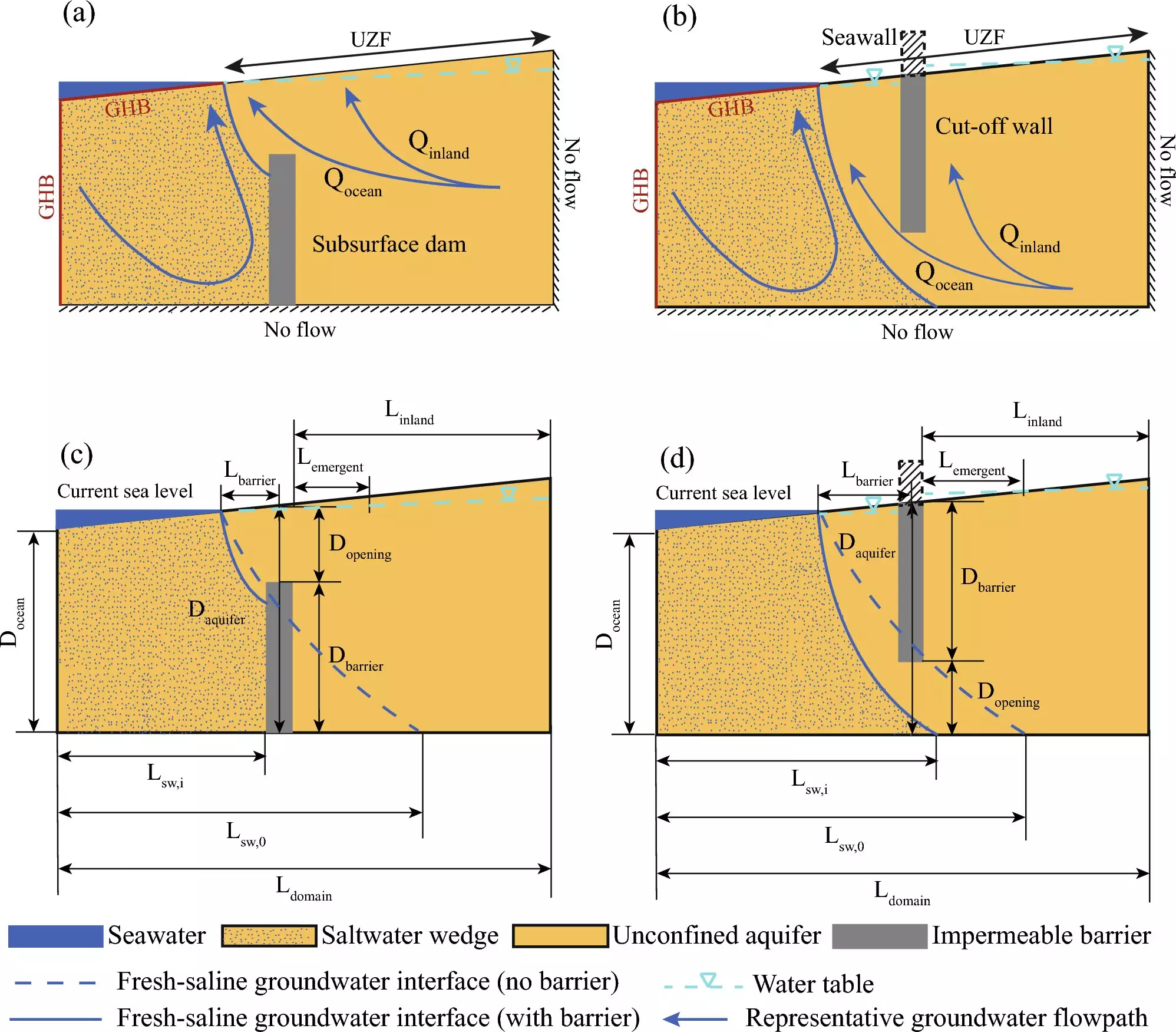As global temperatures climb, the phenomenon of sea-level rise poses one of the most terrifying challenges to mankind, particularly for the populations living in coastal regions. Recent statistics are alarming: sea levels have surged from an annual increase of 1.4 millimeters to 3.6 millimeters between 2000 and 2015. With over a billion people residing in low-lying areas, the potential for catastrophic flooding isn’t merely a theory; it’s a reality that is fast approaching. The societal implications are staggering, necessitating innovative solutions to protect homes, infrastructure, and potable water sources from the encroaching tides.
Conventional Methods Under Examination
Cities such as New York and San Francisco are already formulating protective measures in collaboration with the Army Corps of Engineers. Central to these strategies is the construction of seawalls, structures perceived as a bulwark against rising waters. However, these protective measures come with staggering financial implications, projected to reach tens of billions of dollars. While these seawalls appear robust in theory, new findings are challenging the efficacy of such approaches by illuminating potential negative consequences that could exacerbate existing vulnerabilities.
Discovering the Flaws in Shoreline Barriers
A recent study published in *Scientific Reports* critically examines the role of shoreline barriers like seawalls in the context of rising sea levels. Researchers Xin Su, Kevin Befus, and Michelle Hummel delve into the intricate dynamics between saline and freshwater aquifers, revealing how these barriers could backfire. The study outlines that as ocean levels rise, salty water encroaches on freshwater sources, a phenomenon known as saltwater intrusion. At the same time, a rise in overall water levels compromises both freshwater and saline sources, leading to groundwater emergence—an unwelcome situation where water seeps up from below, resulting in inland flooding.
The findings suggest that while constructing underground barriers may seem like a viable solution, they may inadvertently function as dams, exacerbating flooding issues rather than mitigating them. Water can become trapped behind these structures, leading to an increase in groundwater levels and potential contamination of sewage systems and drinking water supplies.
The Case for Comprehensive Planning
In light of their research, Su emphasizes the necessity of integrating groundwater flooding data into the planning phases for seawalls and similar barriers. This paradigm shift in thinking is vital. As Befus articulates, solely relying on seawalls can lead to considerable complications, including water seeping in from both the ocean side and the land side, thereby necessitating a continuous pumping mechanism to keep areas dry. This scenario mirrors the diligent efforts of the Dutch, who have utilized windmills and modern pumping systems for centuries to manage their own delicate relationship with water.
One of the critical flaws in the current approach is the lack of holistic planning. Historical studies failed to account for groundwater-related flooding when projecting the benefits of underground barriers. The researchers argue that this oversight has resulted in exaggerated expectations for the efficacy of such structures, reinforcing the urgent need for a more nuanced strategy.
Adapting to Reality: A Multi-Faceted Approach
In addressing the escalating threat of sea-level rise, it becomes increasingly clear that there is no one-size-fits-all solution. Instead, city planners must consider comprehensive measures to tackle both saltwater intrusion and groundwater flooding. Suggestions include the integration of backup systems such as pumps or French drains that would help manage excess water. These must be constructed alongside any seawall projects to ensure that the cumulative effect doesn’t lead to worse-than-anticipated outcomes.
As cities like New York, San Francisco, and other coastal regions around the world draft plans to combat the tide of climate change, it’s essential they heed these warnings. By factoring in potential groundwater emergence into their blueprint designs, planners can erect barriers that serve their intended purpose without provoking additional challenges.
In a climate crisis that continues to unfold, the urgency for effective and comprehensive flood management solutions could not be higher. The stakes are simply too great to proceed with a piecemeal approach, and it is incumbent upon us as a society to devise and implement strategies that holistically address these risks. Innovative thinking combined with meticulous planning could lead us toward a more sustainable coexistence with the rising seas.


Leave a Reply